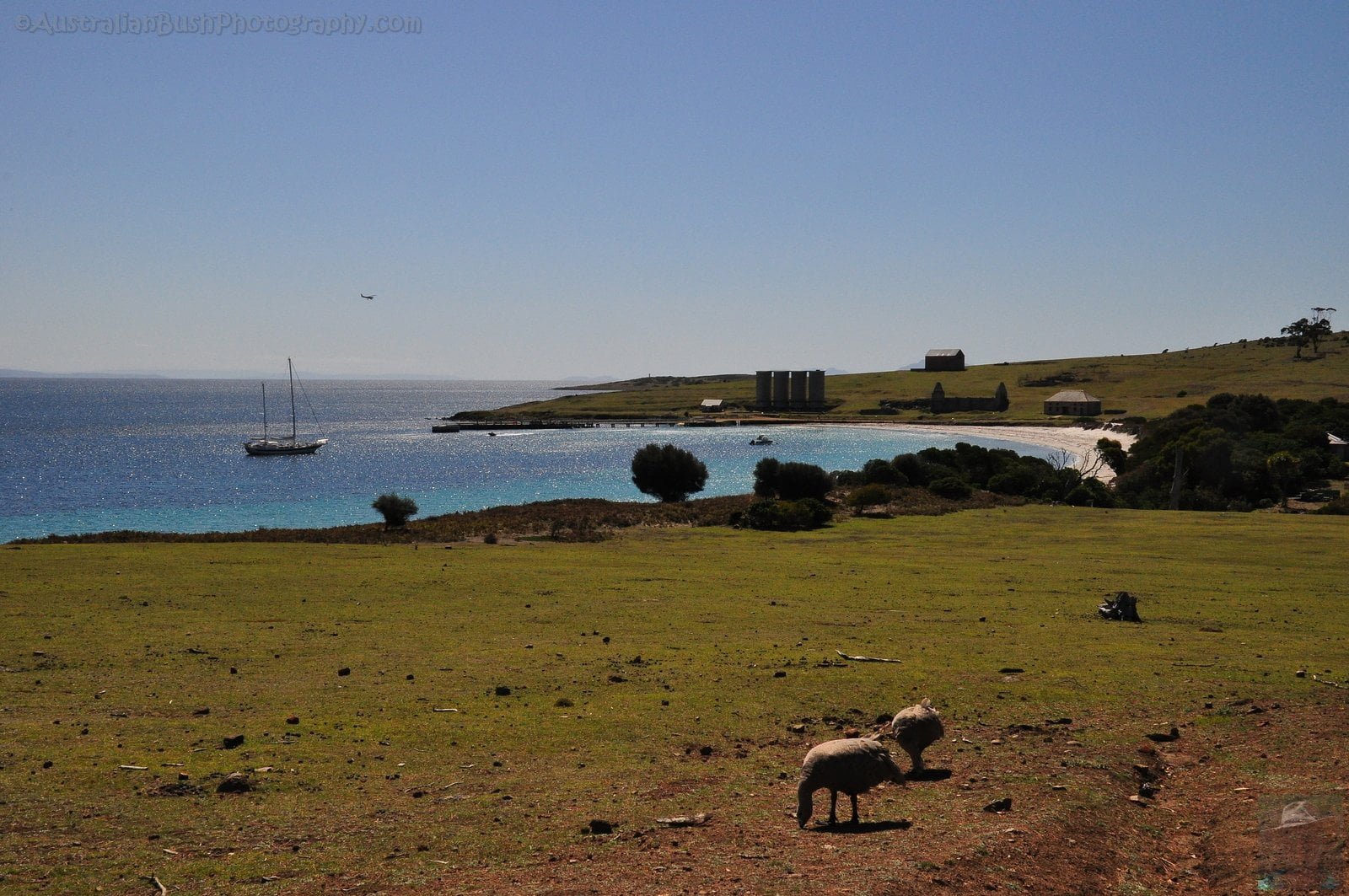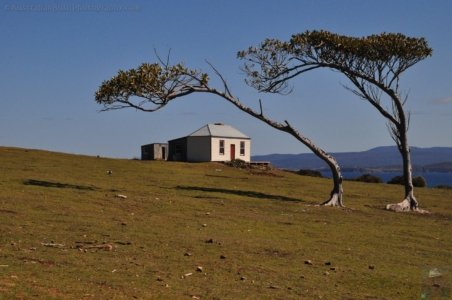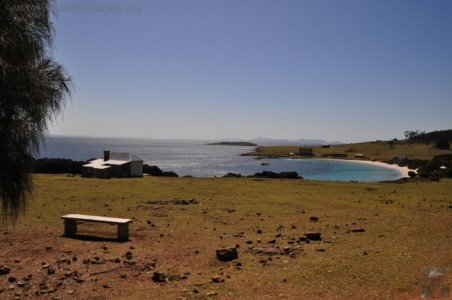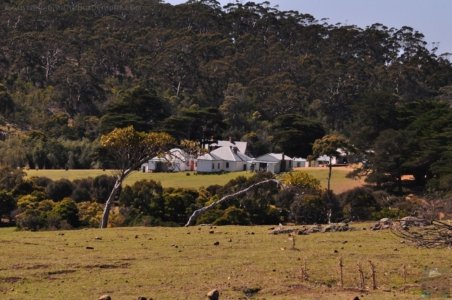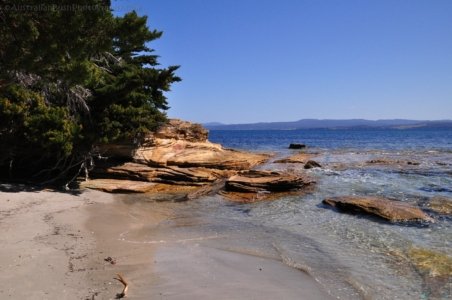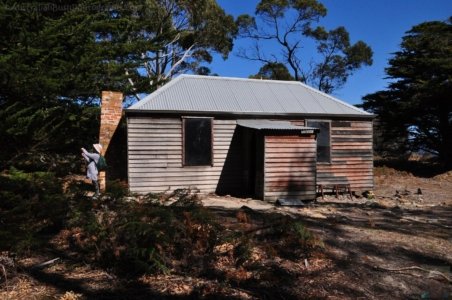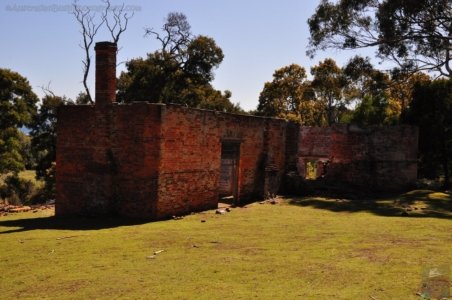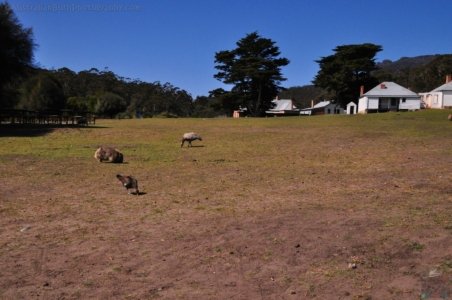October 5, 2019
Maria island is now entirely a National Park accessed via a Ferry service from Triabunna which leaves six times a day (a little less in Winter) for a 30 minute crossing, half of this is in the shelter of the estuary and the other half across Mercury Passage with views to the North including the Southern aspect of Schouten Island and Freycinet.
At left, first look at the island from the ferry
As you near the jetty the buildings come into view and you get a first look at the clean beauty of this place. With a chequered history from Penal Colony to Probation Station, Cement Works, Vineyard and Farm the island is now home to only a small number of National Park staff and theirs are the only vehicles on the island. With Darlington, the remains of the penal Colony and Probation Station being at this northern end the rest has only a few remnants of the earlier activities.

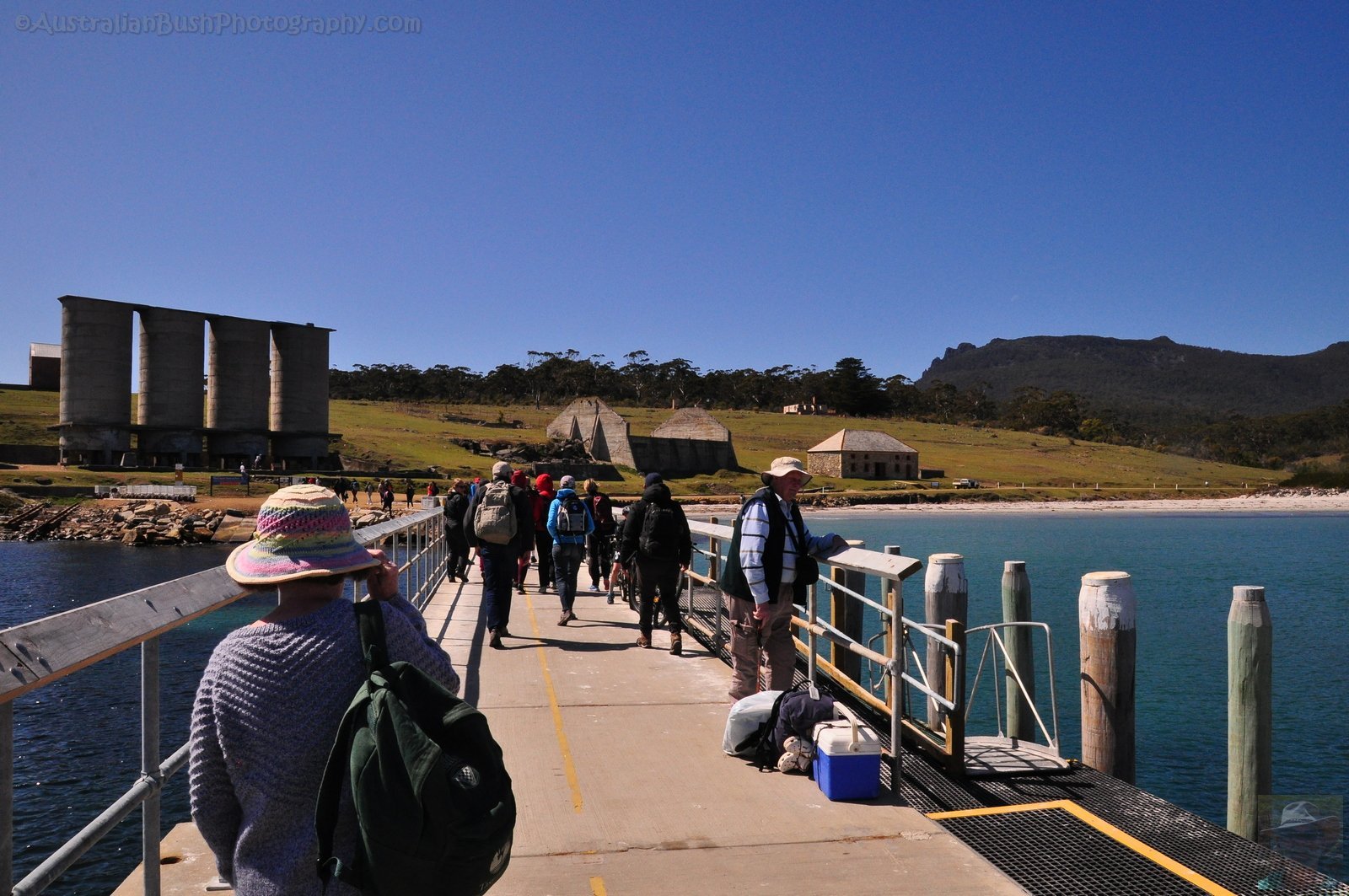
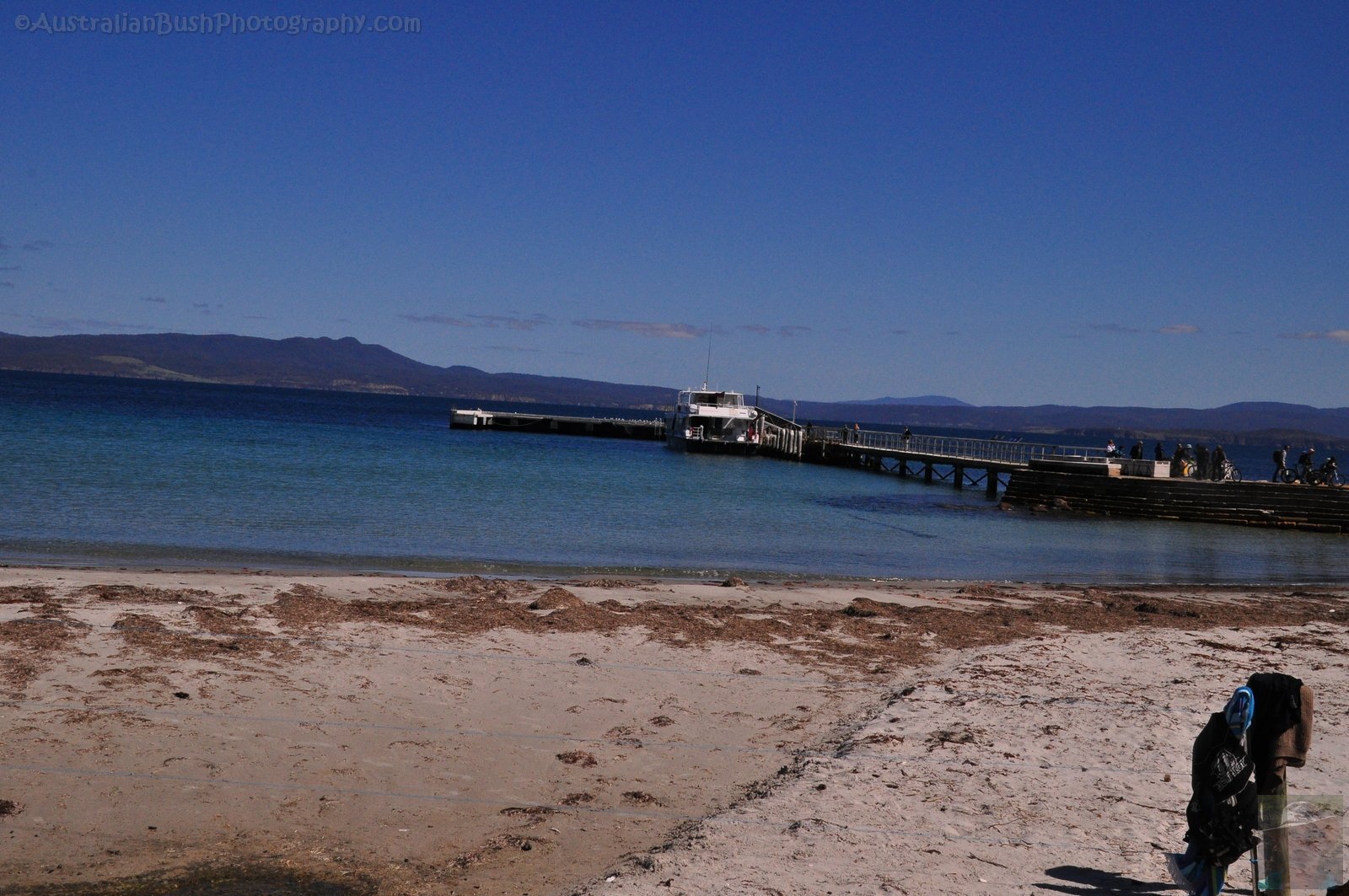

Leaving the jetty area we encountered our first Wombat with a young one just emerging from their burrow, little did we know that Wombats are seen grazing like sheep all over the island and often blend into the landscape lke fluffy rocks!


Our first walk was to skirt the buildings and proceed out to the Painted Cliffs, as this is only accessible from the bottom at low tide we would have been unable to get there later in the day. This route takes you past Mrs. Hunt’s Cottage which overlooks the bay to the North and over grazing land to Hopground Beach along which you can walk at low tide to the painted Cliffs themselves.
The Painted Cliffs are in fact a Sandstone outcrop: this from the official guide: “The patterns are caused by ground water percolating down through the already ormed sandstone and leaving traces of iron oxides,which have stained the rock formation. This probably occurred millions of years ago in a monsoonal climate.More recently, sea spray hitting the rock face has dried,forming crystals of salt. These crystals cause the rock to weather in the honeycomb patterns that you see. Wave action has also created some interesting features. Rock fragments moved around by the water have gradually worn small potholes and notches into the cliff face,eventually resulting in the undercutting of the cliff.”
From the Painted Cliffs the return path takes you first past Howalls Cottage where we spotted Black Cockatoos feeing off sap in the trees. From here you take a inland loop and over the hill back to Darlington via the old oast house, now mostly in ruins. Arriving back at Darlington we paused for lunch (you have to take everything with you to Maria as there are no supplies on the Island) at the Camp Kitchen/Shelter and watched the Wombats, Geese and Native Hens all fossicking around for food.
In the next post we look at the Darlington settlement and the Fossil Cliffs Walk
